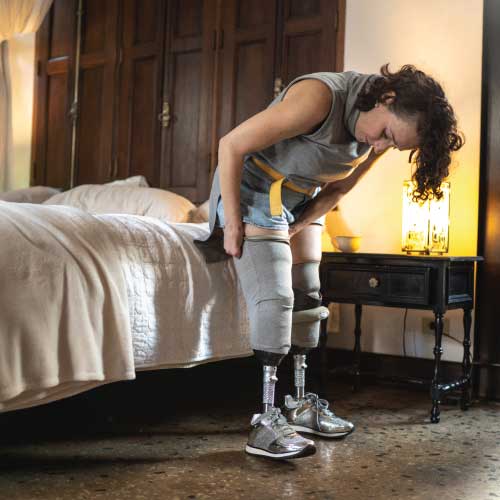New Device Tricks the Brain Into Thinking Missing Limb Still Exists
One of the top issues most prosthetic users confront is the sense that the prosthetic limb doesn't belong to the body. This lack of intuitiveness often leads to high prosthesis abandonment. But new findings on phantom limb and phantom warmth may soon change that.

Phantom limb refers to feeling sensations in the area of the amputated limb. The individual experiences sensations in the missing limb as though it were still there. Phantom limb occurs in most people who lose an arm or leg, but scientists still couldn't fully understand why this happens.
Feeling phantom warmth
While researchers have already known that individuals with limb loss can experience sensations and pain in their phantom limbs, this is the first time they've observed temperature detection.
A team of researchers from Italy and Switzerland published a paper in May 2023 that describes how people with phantom limbs can feel temperature changes. To test phantom warmth, the team developed MiniTouch, a portable device that allows amputees to detect temperature through their prosthetic limbs.
According to the researchers, understanding phantom warmth could help them create better prosthetic limbs that can help users feel temperature changes. And a prosthetic limb that detects temperature can create a feeling of oneness with the user. Even existing sophisticated prosthetic limbs have yet to offer that capability.
Besides helping prosthetic users feel temperature changes, the MiniTouch also offers the ability to register affective touch, which triggers the release of oxytocin, also known as "the love hormone," in the brain.
Affective touch can carry emotionally charged information, which is helpful in social interactions. In comparison, other prosthetic limbs can only offer mechanical touch, which allows users to receive messages about pressure, texture, and vibrations.
Mapping invisible hands
The researchers conducted several experiments with 27 individuals to test their ability to sense changes in temperature. In the first experiment, they aimed to create a thermal map of the participants' phantom hands. To do so, they connected thermal electrodes from a device called MetaTouch to different areas on the participants' residual limbs.
Participants in the study used the thermal phantom hand map to identify the areas where they felt a temperature change. During one experiment, the researchers applied menthol to the residual limbs of the participants. The participants could then point out the specific areas where they felt the menthol's cooling effect, saying things like, "I feel my left index finger cooling down." The results of the study showed that 17 out of 27 participants possessed this hand map, indicating that a similar percentage of the amputee population may also have this ability.
In the next test, the researchers conducted a test on eight participants to measure 'phenomenology.' Phenomenology is the sensation that someone experiences while holding an object. To assess this, the participants were asked to hold copper, glass, and plastic samples in their sound side hands while feeling the same materials through the MetaTouch device connected to their residual limb.
During the third test, the researchers demonstrated that the MiniTouch is a viable prosthetic enhancement that can regulate temperature. This technology is designed to be incorporated into existing prosthetic devices. Essentially, the MiniTouch functions as a layer of skin that can be placed over the prosthetic limb, enabling it to replicate the sensation of changing temperature on human skin.
What's next?
While this new device shows excellent potential for new prosthetic limbs, the MiniTouch is still far from commercialization. There is still a lot that researchers need to do to fully understand phantom limbs, like how an individual regains their tactile senses in their residual limbs. The researchers also noted that they want to pursue further tests, including larger and longer-term trials.
But the good news is that the MiniTouch would be more affordable than other bionic hand models that cost tens of thousands of dollars.
It's worth the wait.











































































